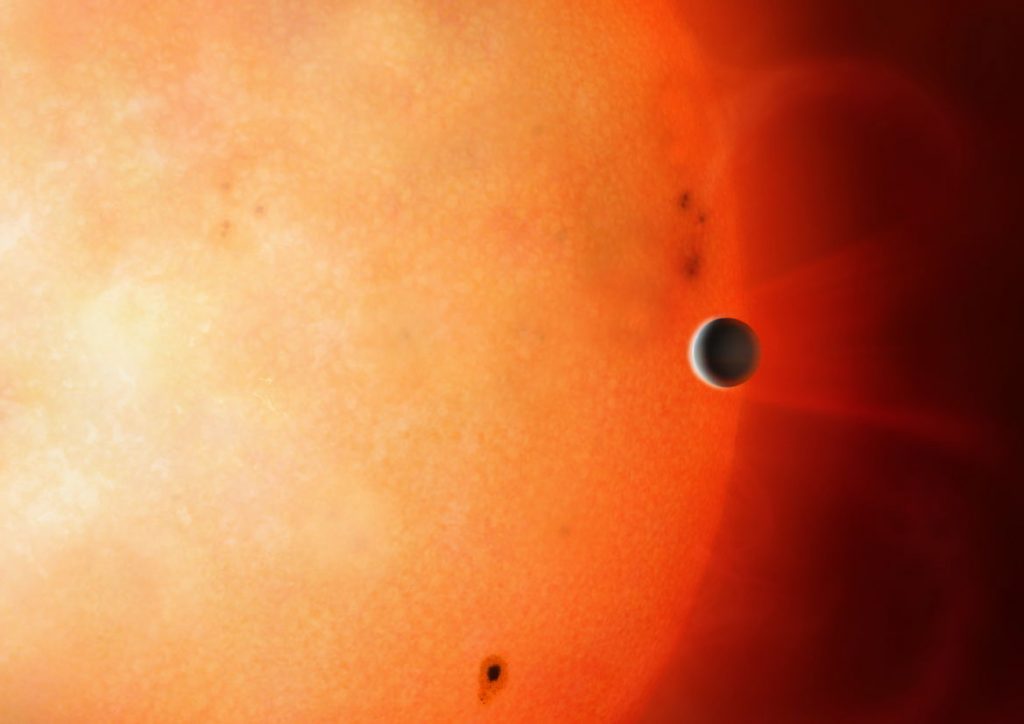
In today’s top story, planetary scientists at the University of Warwick have discovered a super weird object that is best explained as a planetary core from a former gas giant.
Located 730 light-years away, this object, TOI 849 b, orbits a star not too different from our Sun. The catch is that its atmosphere was completely stripped off, leaving behind an almost forty-Earth-mass core of rock-density material. Today, this world is snuggled so close to its star that it orbits every eighteen hours from a point where it feels the Sun’s every flare. According to the paper’s abstract: The planet could have been a gas giant before undergoing extreme mass loss via thermal self-disruption or giant planet collisions, or it could have avoided substantial gas accretion, perhaps through gap opening or late formation.
You can read the entire paper, with first author David Armstrong, in the journal Nature.
To break that explanation down, they see three different scenarios as possibly producing this atmosphere-less rock: 1) maybe it formed this way, and due to a lack of gas where it formed, it couldn’t build up an atmosphere; 2) maybe this world had a horrible collision with other gas giants and lost its atmosphere during the catastrophe. Those are both fine examples, but it’s the third one that is most tantalizing: 3) this world could be the naked core of a gas giant that had its atmosphere blasted away from its star.
This is a large object, and removing its atmosphere is non-trivial, but with such a small orbit it’s possible. This paper is a reminder that when we look at worlds today, we can’t really know how they started. In devising solar system evolution models, we need to remember that worlds can start with amazing atmospheres that stars and collisions and possibly other events like gamma-ray bursts can all strip away, and collisions with asteroids and comets can bring an atmosphere back. The one constant of the universe is that everything is changing, and what we see today is a snapshot of the changing cosmos.
More Information
The University of Warwick press release
“A Remnant Planetary Core in the Hot-Neptune Desert,” David Armstrong et al., 2020 July 1, Nature




 Join the Crew!
Join the Crew!
 Escape Velocity Space News
Escape Velocity Space News
0 Comments